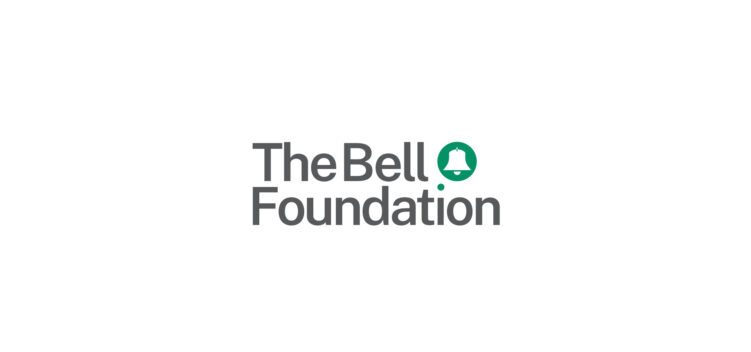Intervention Groups: Supporting Secondary EAL Learners Beyond the Classroom (Webinar)
- Date
- 16 May 2024
- Time
- 4:00pm
- Price
- Free
- Type
- Webinar
Explore our policy recommendations for breaking down language barriers
in schools, adult education, and the criminal justice system.

Translanguaging is the term used to describe practices that allow and encourage EAL learners to use their full linguistic repertoire in order to empower them and help them to realise their full potential. This means encouraging them to speak, write and/or translate to and from their first language or any language they speak and English, to support their learning.
Encouraging translanguaging involves fostering positive attitudes towards multilingualism and encouraging EAL learners to be proud of all their language skills. Allowing learners to choose which language to use at any time is a key feature of translanguaging.
Translanguaging can be used with EAL learners at all stages of English language proficiency, at any age and across the curriculum. Here are a few examples:
1. Bilingual and multilingual glossaries:
These are useful to help EAL learners to build on their prior knowledge. For example in Organs and Systems there is a multilingual word bank giving the names of organs, which many EAL learners may know in their first language. Other resources on this website recommend encouraging learners to compile their own bilingual glossary of key terms.
2. Drafting written work in first language:
When being asked for an extended piece of writing, such as a newspaper article in English, EAL learners with good literacy skills in their first language often produce a more sophisticated result if they are encouraged to draft it in their first language before writing it in English, particularly if they are at the New to English or Early Acquisition stages. This is because they can concentrate on the content first without being constrained by thinking about how to express it in English. They can then try and translate it with the help of a bilingual dictionary or translation software.
3. Online research:
If learners are asked to conduct their own research on a topic this can often be done entirely or partially in their first language. For example in Life and Works of Charles Dickens learners are asked to find out information such as which books some of his most famous characters appear in, or matching the name of a character with a short description, and some of this research could be carried out in the EAL learner’s first language.
4. Group discussion:
Many of the group and pair discussions in resources on this website provide good opportunities for translanguaging.
Top tip: Make sure that the EAL learners in the class are clear that they are encouraged to use their first language in lessons (unless asked to use English for a specific task) and that this will help them to develop both/all their languages.
All EAL learners have useful language skills in their first language, and many also have literacy skills, which they can build on to acquire academic English. Learners may sometimes find it easier to engage with new concepts in their first language and transfer that knowledge and understanding to English. The principle of building on the learner’s prior knowledge is a key aspect of EAL pedagogy (NALDIC 1999).
Research such as the work of Cummins (dual iceberg and threshold theories), and Collier and Thomas (2002) recommends a socio-culturally supportive school environment for EAL learners that allows natural language, academic, and cognitive development to flourish in their first and second languages. Welsh research into bilingual education (Baker and Wright 2017) points to the advantages of bilingualism and bilingual education, and there is also research that suggests the cognitive benefits continue into later life (e.g. Bialystock et al. 2012).
Researchers into translanguaging, such as Garcia and Li, argue that giving EAL learners the opportunity to use their full language repertoire empowers them and enables them to reach their full potential. The importance of a positive attitude to multilingualism has been suggested by various researchers and activist for a long time. For example, Skutnabb-Kangas (1984) coined the term ‘linguistic human rights’ and challenged what she saw as ‘linguicism’. Levy et al (2014) suggested that learners whose first language is seen as low status in schools feel less included. Conteh (2015) reinforces the idea that valuing multilingualism in schools promotes success for EAL learners.
Baker, C. and Wright, W.E., 2017, Foundations of bilingual education and bilingualism (6th edition), Bristol: Multilingual Matters.
Bialystock, E., Craik, F. I., Luk, G. 2012, Bilingualism: consequences for mind and brain, Trends in Cognitive Science 16, 240-250.
Conteh, J., 2015, The EAL Teaching Book: promoting success for multilingual learners (2nd edition), London: Sage.
Levy, T., Little, S., Clough, P., Nutbrown, C., Bishop, J., Lamb, T. and Yamada-Rice, D., 2014, Attitudes to Reading and Writing and their Links with Social Mobility 1914-2014: An evidence review, Sheffield.
NALDIC, 1999, The distinctiveness of English as an Additional Language: a cross-curricular discipline, National Association of Language Development in the Curriculum, Working Paper 5.
Skutnabb-Kangas, T., 1984, Bilingualism or not the education of minorities. Clevedon, Avon: Multilingual Matters.
Thomas, W.P. and Collier, V.P., 2002, A National Study of School Effectiveness for Language Minority Students' Long-Term Academic Achievement. Office of Educational Research and Improvement (ED), Washington, DC.